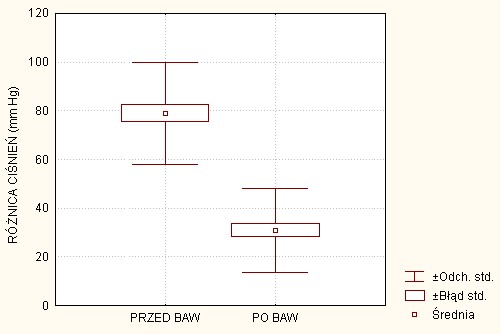A significant congenital aortic valvular stenosis (AS) causes hypertrophy and destructive myocardial changes. The value of balloon valvuloplasty (BAV) in children is still under debate. We sought to evaluate the results of the BAV in children in one center retrospective survey.

Jacek Bialkowski Silesian Center for Heart Diseases, Zabrze Poland
A significant congenital aortic valvular stenosis (AS) causes hypertrophy and destructive myocardial changes. The value of balloon valvuloplasty (BAV) in children is still under debate. We sought to evaluate the results of the BAV in children in one center retrospective survey.
Retrospective analysis of 140 patients in whom BAV was performed in years 1993-2010. Two separate group were selected: 48 neonates and infants <2 months (called critical AS) and 92 older children (more than 3 months of life) with AS. In the first group mean age was 18,5 days (weight 3,5 kg) in the second 7,8 years ( weight 29,9 kg) Following parameters were evaluated before and after the procedure: some technical aspects of BAV, clinical status, transaortic pressure gradient, degree of aortic regurgitation and necessity of surgery.
BAV was performed by femoral access in 20/48 neonates (and in all older children), by carotid artery in 27/48 and in one by trensumbilical vein. Balloon stabilization (eg RV rapid pacing) during the procedure was performed in no case of critical AS and in 13/92 (14,1%) older children . The procedure was succesfull in 81,2% of critical AS and 85% of others. Five children with critical AS died during periprocedural period (all because of fibroelastosis and /or heart failure). Mean aortic gradient after BAV decreased in neonates with critical AS from 67 to 18 mm Hg, in older children from 78,5 to 32,5 and persisted in follow-up (mean 4,1 years and 4,5 y respectively). Aortic regurgitation appeared in 17/48 (36,9%) neonates and 29/92 (31,5%) in older children. During follow-up in 22 patients (in both groups) various surgical interventions were necessary mainly due to progression of aortic regurgitation .
We concluded that balloon aortic valvuloplasty is a treatment of choice in neonate and infants with critical AS as an urgent palliative treatment. In older children the procedure often allow to postpone surgery till the age, when adult size prosthesis can be used. Aortic insufficiency is the most frequent procedure related complication, which sometimes require subsequent surgical intervention. In some children BAV seems to be the definitive treatment, but this statement needs to be confirmed by longer follow- up. In teenagers and adults aortic valve replacement is still the routine treatment, but why don`t try balloon angioplasty prior to planned operation?
Fig 1 Reduction of the gradient LV-Ao after Balloon Aortic Valvuloplasty.

Fig 2 Aortic regurgitation after Balloon Aortic Valvuloplasty




 京公网安备 11010502033353号
京公网安备 11010502033353号